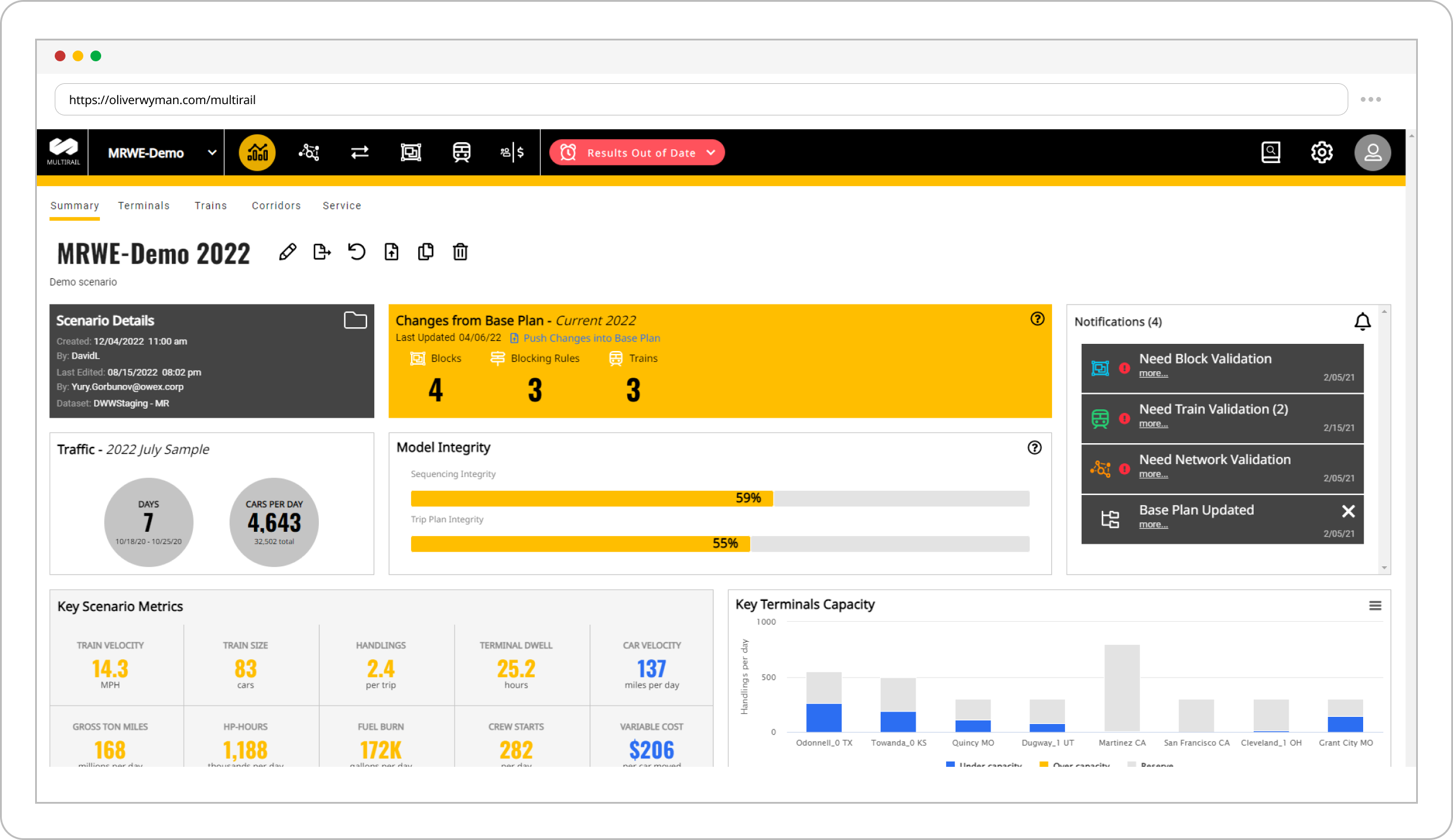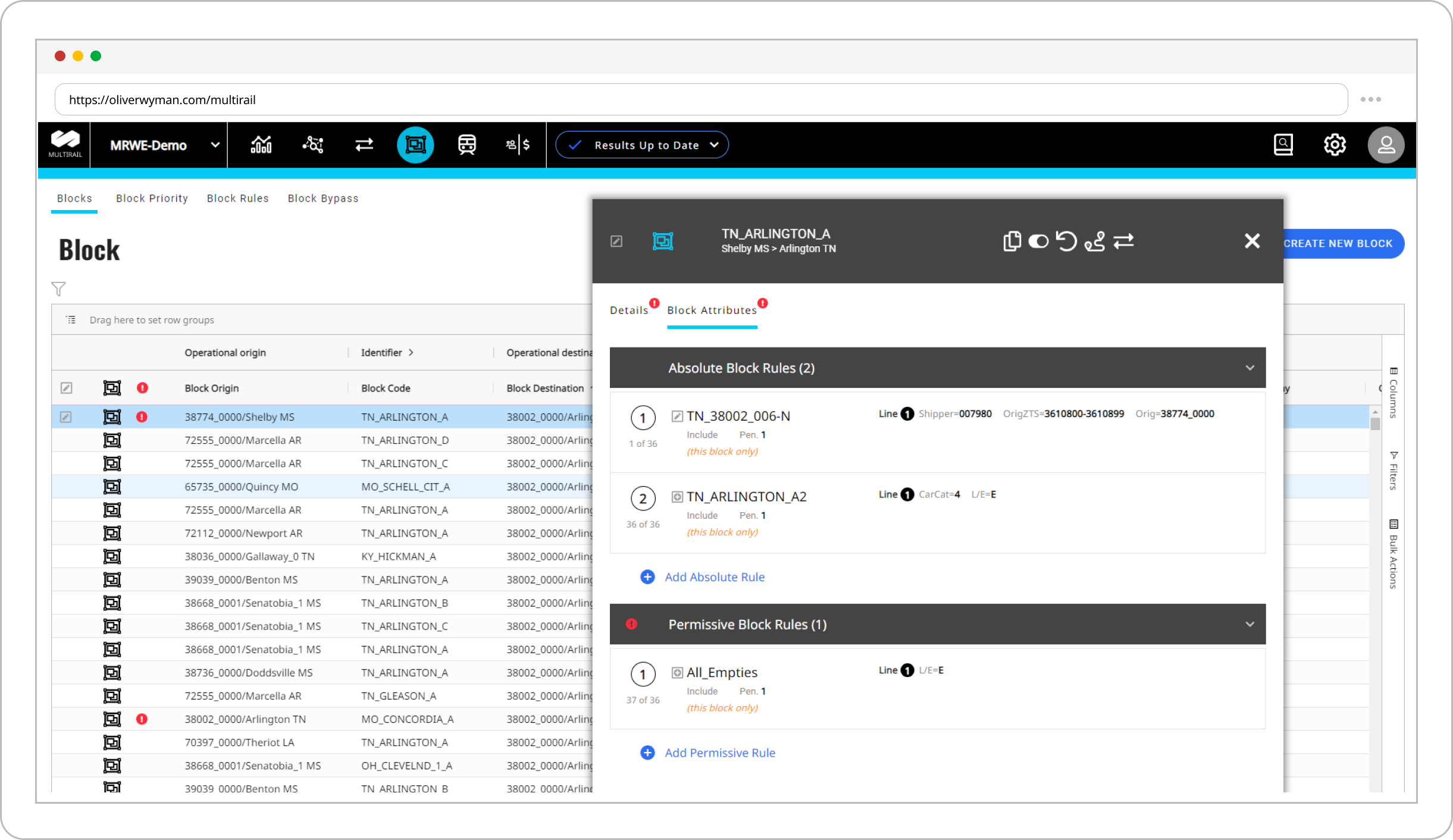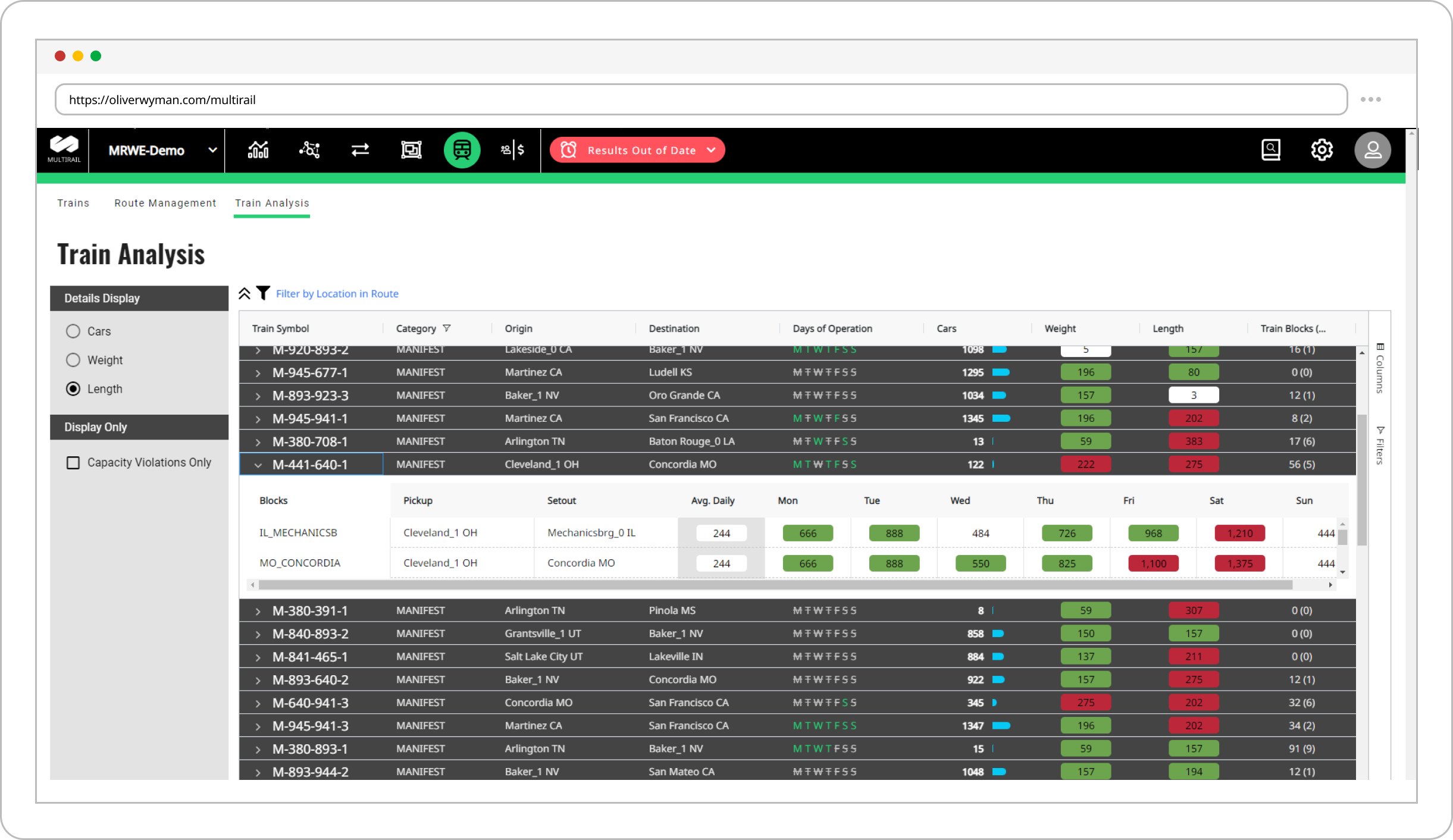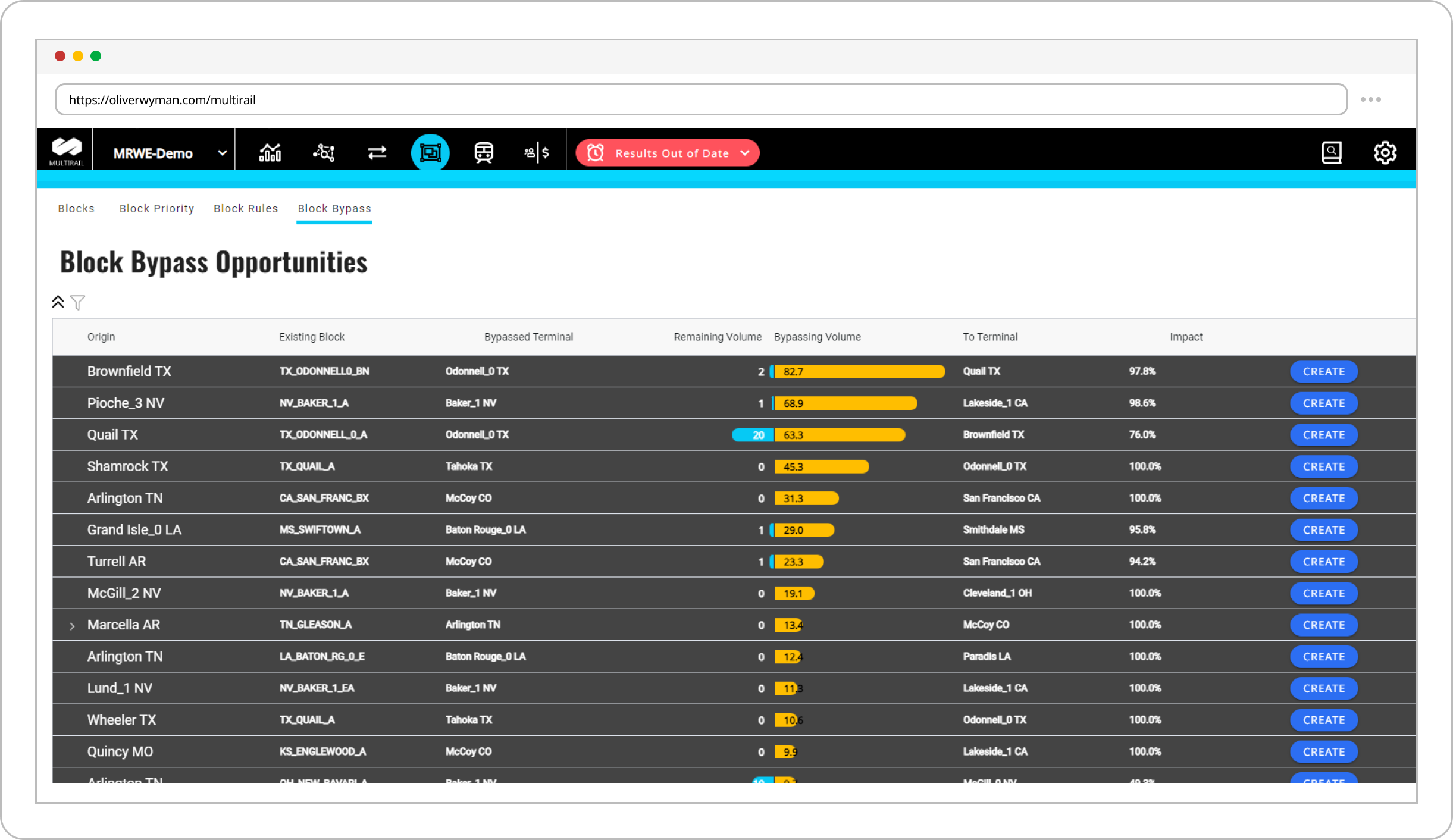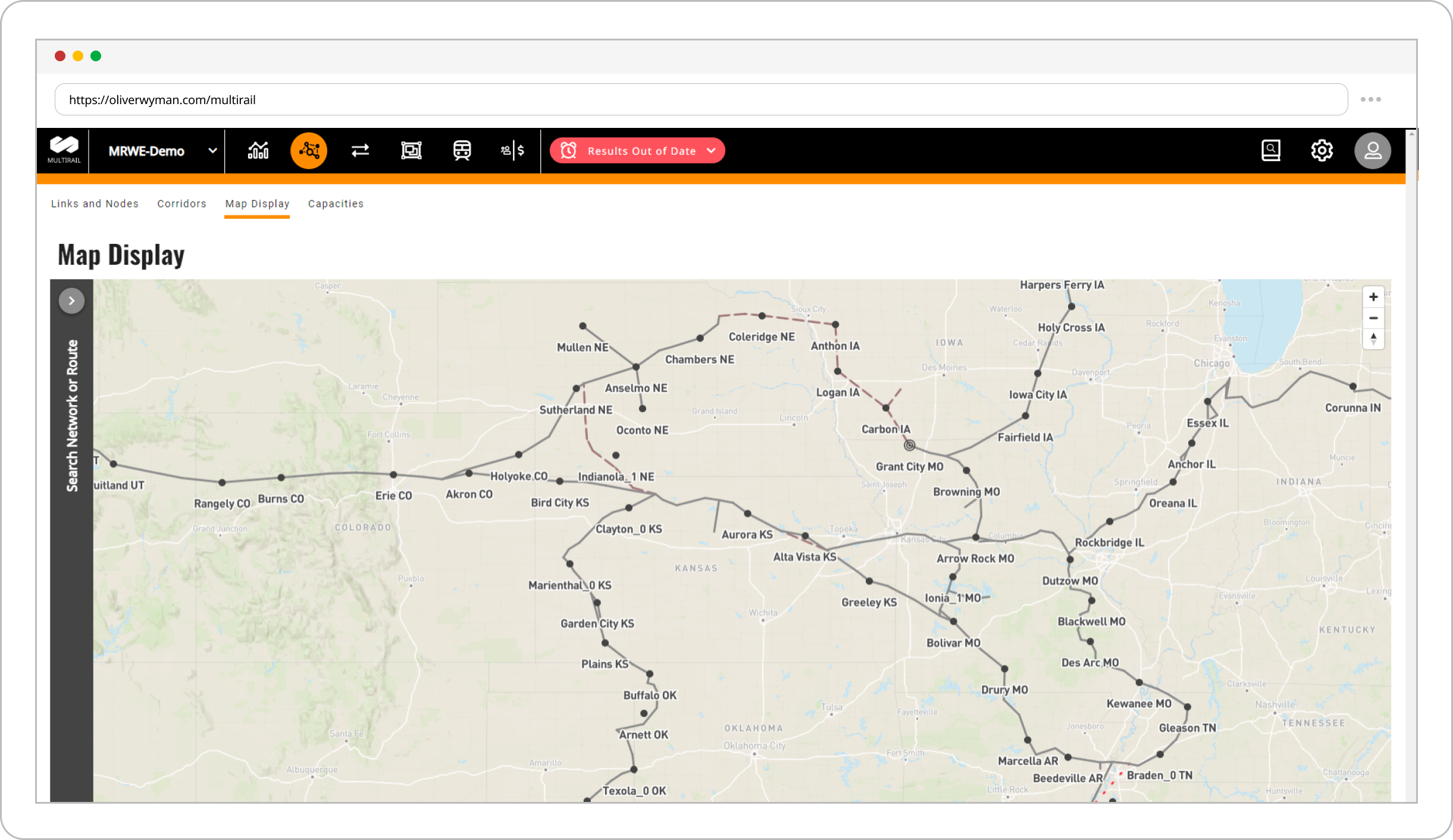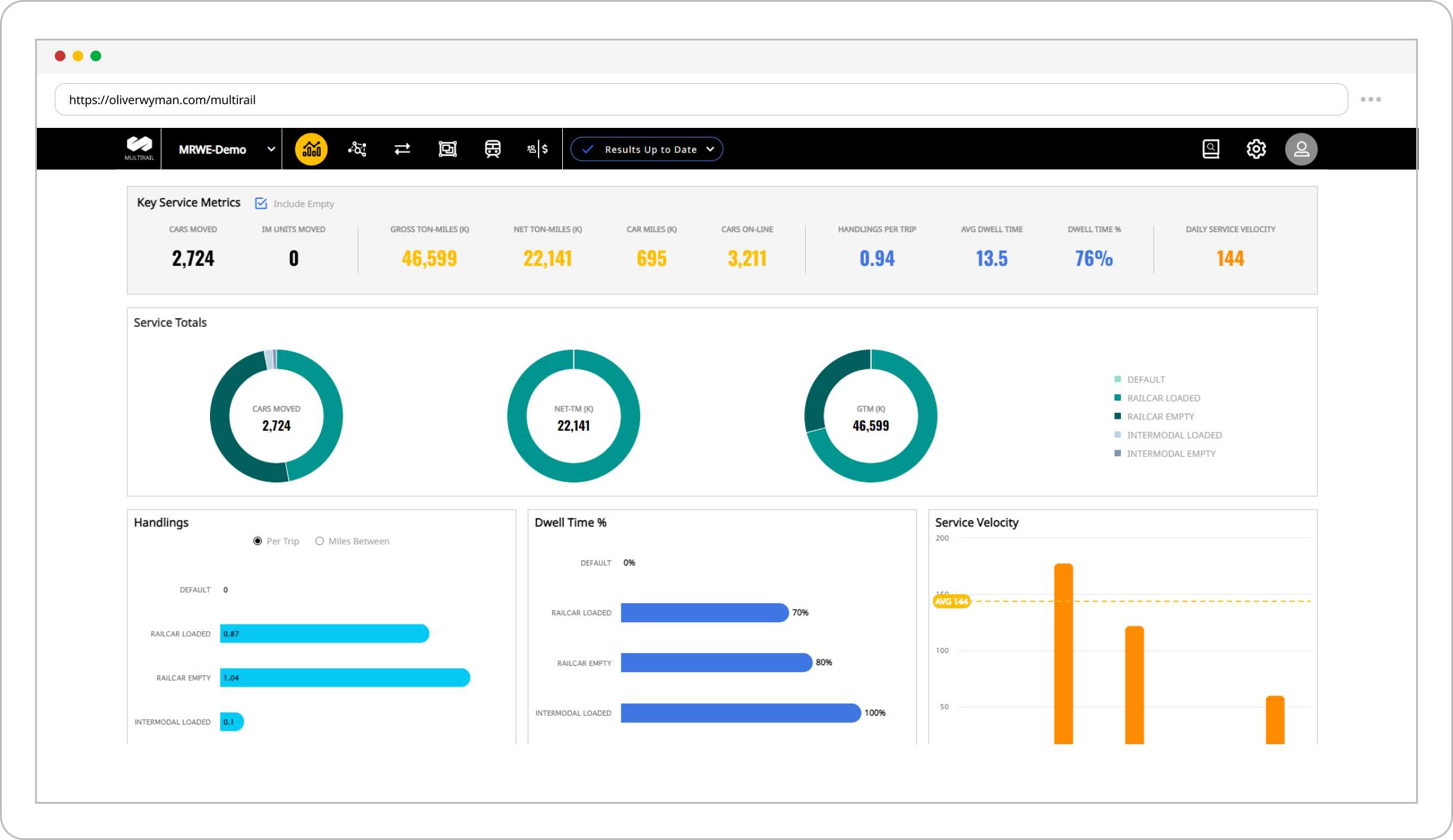-
Global
-
Africa, India, Middle East
-
Americas
-
Asia Pacific
-
Europe
© 2022 Oliver Wyman INC. All Rights Reserved.
our mission is to provide
a comprehensive solution to
optimize railroad operations
and lower costs

our mission is to provide
a comprehensive solution to
optimize railroad operations
and lower costs
our mission
is to provide a
comprehensive
solution to
optimize railroad
operations and
lower costs
Optimize your operations and lower costs
Oliver Wyman's MultiRail Web is used by leading railroads as their core software platform for rail service design planning. It provides a layered toolset for railroad planners to comprehensively manage traffic, trains, blocks, and assets. As an integrated solution providing end-to-end support of the planning and steering process, MultiRail Web enables railroads to optimize both operations and costs. This means that you can easily and accurately manage service design processes and analytics using either historical or forecast traffic data. Our robust multi-user collaborative interface provides your team with diagnostic levers to ensure the most efficient routing and handling of traffic, along with tools to eliminate errors and loose ends in the operating plan.
Structure
For New Plan Generation
Rapidly develop “what-if” scenarios with alternative plan ideas, thanks to a faster, structured analytic process and improvement suggestion tools
Liberate
the Design Process
Reduce the number of unstructured “ad-hoc” analytic processes using Microsoft Excel and Access, saving time during data extraction and analytic steps
Stabilize
the Plan
Create a more cohesive, reliable, and tested plan that results in fewer modifications being made downstream and that minimizes network stresses from a lack of structure
cross
Internal Boundaries
A structured framework allows service planning to cross the railroad’s internal geographical and structural boundaries—so your team can collaborate effectively on the best plan for your railroad
Improve
Service Metrics
Improve key metrics that drive service reliability and asset productivity, such as terminal dwell times and train sizes
Simulate the
Customer Experience
Understand the impact prospective changes will have on origin-destination specific trip plans, providing an audit process to track changes over time
Railroad service design in six steps
A comprehensive system to build a freight plan from the combination of core data and plan development inputs, and deliver a trip plan simulation to understand customer, service, asset, and capacity impacts
Core data
Plan development and analysis
Results
Network
Network structure, including links and nodes; relevant attributes such as speeds
Yard Blocks
Optimization of criteria groups as a base for routing plans, yard plans, etc.
Trip Plans
Simulation of car movements through the network
Recoup the cost
in 6-12 months
MultiRail Web allows railroads to capture the value of operational improvement through a structured planning process. Railroads have an opportunity to realize operational improvements using MultiRail in the following areas:
Train Speed
Consolidate work, crew, fuel, inspection, DPU, helper, and other train events, plus make sure trains operate within capacity limitations
YARD THROUGHPUT
Plan yard workload and activity types by shift, day of week, and within capacity limitations
Car Velocity
Improve car connections in yards, explore new block builds that allow for reductions in downstream handlings, and ensure that areas of dwell and excessive work are reduced
local operations
Build local service plans for modeling of local train operations, ensure serving yard capacity is adequate for local needs, and track customer switching and/or blocking commitments
Corridor THROUGHPUT
Manage the interfaces between corridors and yards, and ensure corridors have sufficient capacity for non-scheduled train slots and maintenance events
PRODUCTIVITY AND COSTS
Evaluate and contrast different plan scenarios by exploring simulation results with capacity awareness, operational metrics, and resources and costs estimation
MultiRail Web
enables structure and savings
MultiRail Web’s flexible design structure allows a next day, next month, next quarter, or next year modeling approach. MultiRail Web’s modern interface provides railroad planners with the tools to build sustainable, resource-appropriate, and capacity-aware plans:
